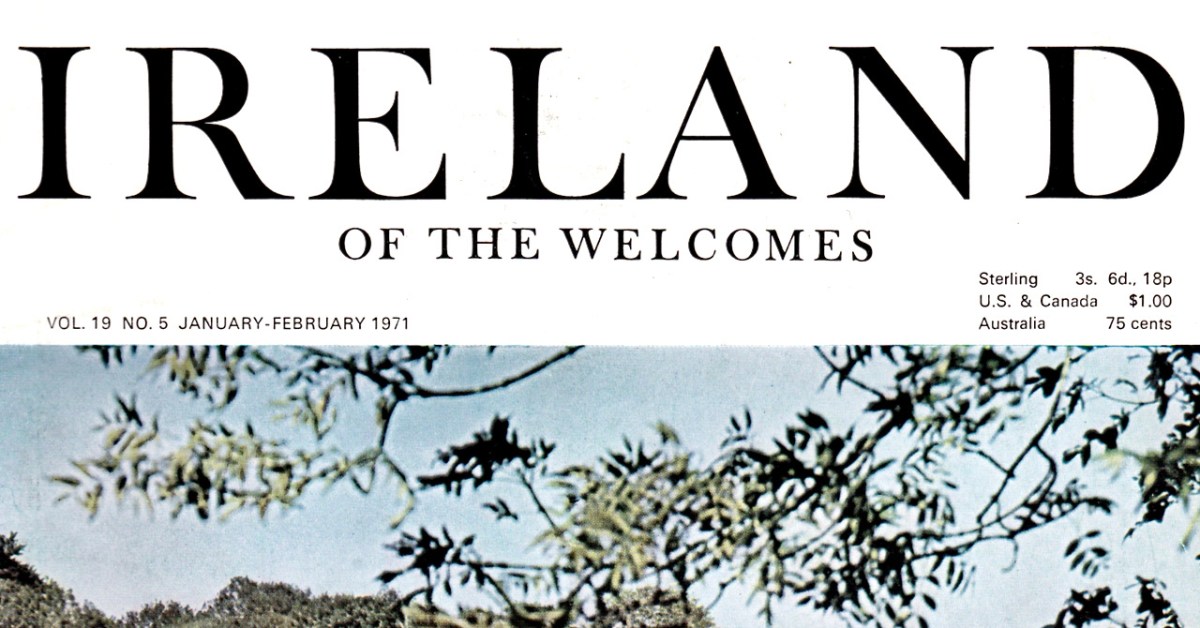
Several years ago we were the fortunate recipients of a complete set of Ireland of the Welcomes from the 1970s, and guess what? That’s exactly 50 years ago! So I am going to try to chronicle 1971 for you from our vantage point of half a century later, as we go through this year, using the articles in the magazine. Call it recent history, call it nostalgia, call it an exercise in compare and contrast.
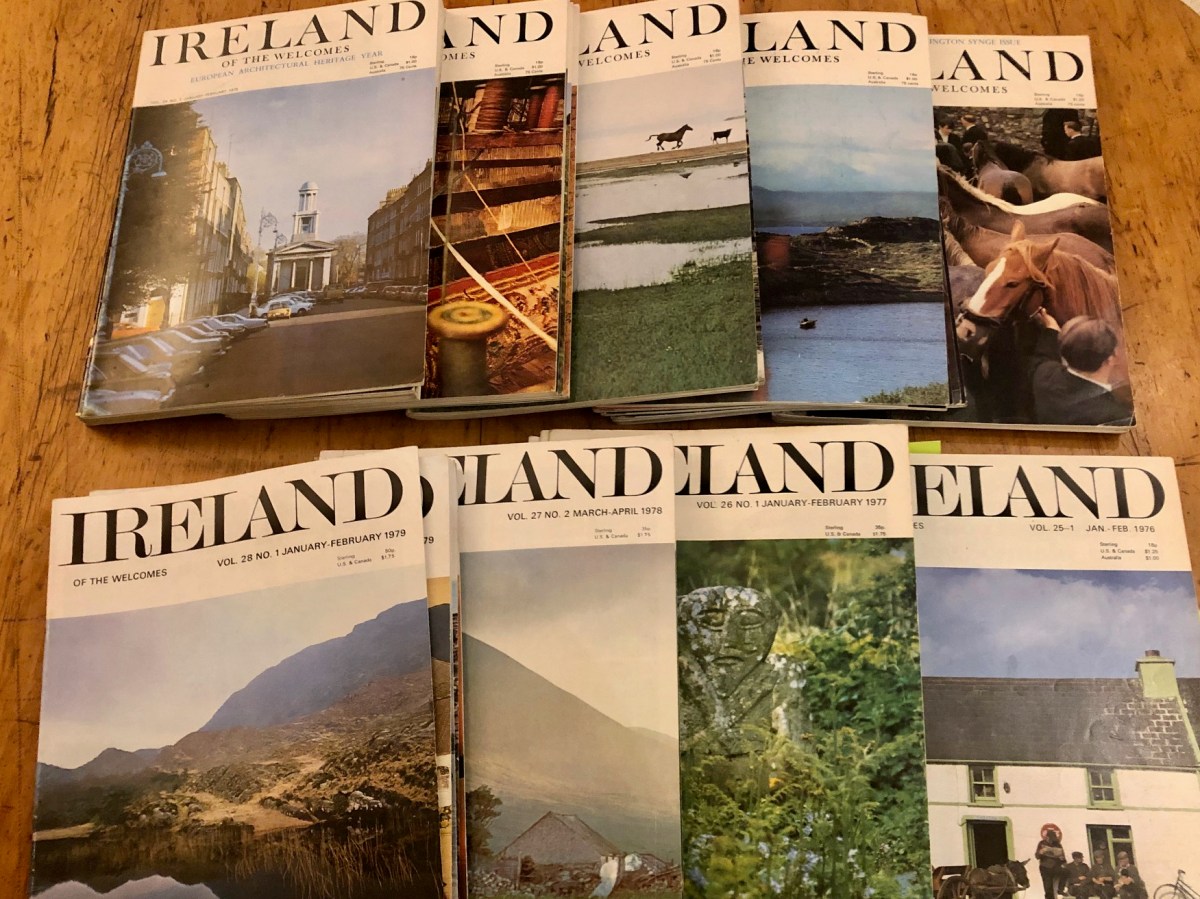
Every issue from 1971 to 1979, six issues a year
The magazine is still flourishing – indeed, it’s one of the longest periodicals of its sort in the world – and continues to put out 6 issues a year. The website describes it thus: Each issue features lavishly-illustrated articles on Irish beauty spots, regular features on Ireland’s extraordinary millennia-spanning history, remarkable literary talent and history, music and dance traditions, as well as folklore, festivals, events and so much more… The photography nowadays is superb.
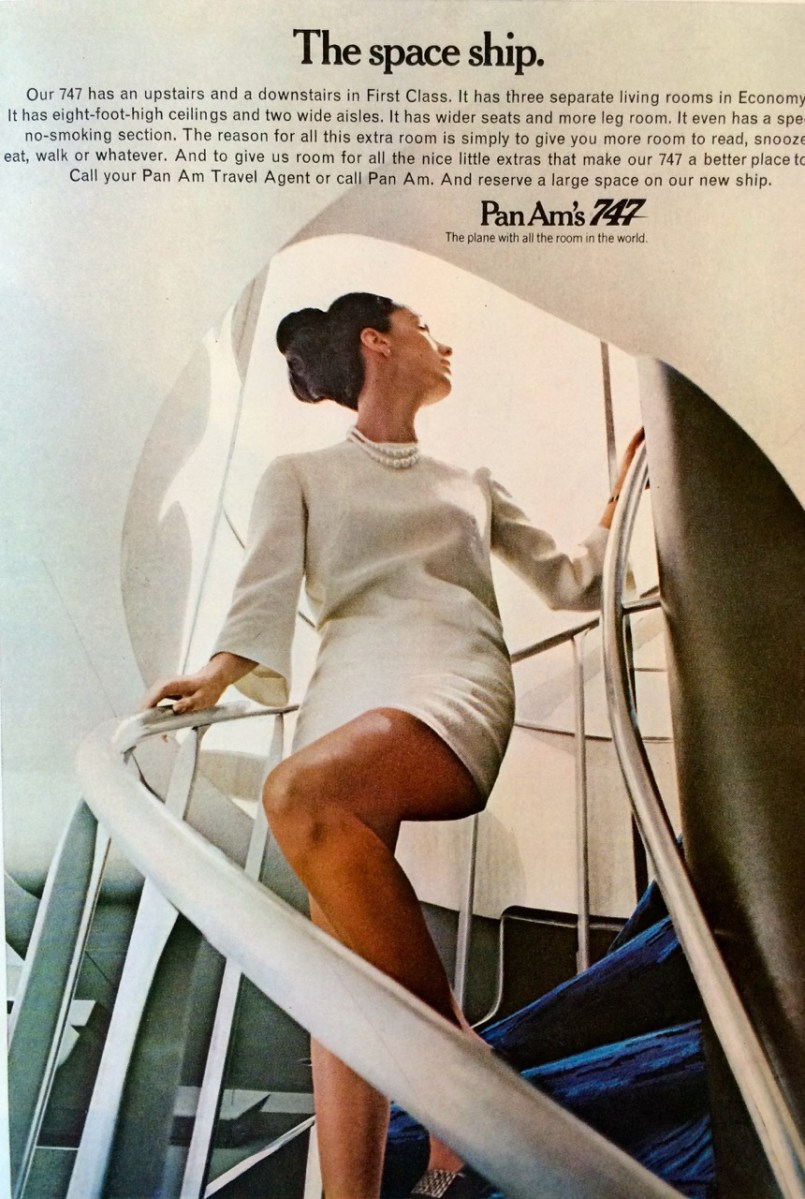
Flying Pan Am into Ireland – 1970s Mad Men-style advertising
Although published by a private company now, in the 1970s Ireland of the Welcomes was an official publication of Bórd Fáilte, the Irish Tourist Board. Aimed at the overseas market, it was nevertheless also deservedly popular in Ireland. My father, who worked in marketing in Aer Lingus, brought home each issue as it came out and we poured over it. It showed us what others might find interesting about Ireland and therefore what we ourselves could be proud of. Ireland was so different then – but Ireland of the Welcomes was chronicling the emergence of who we are now.
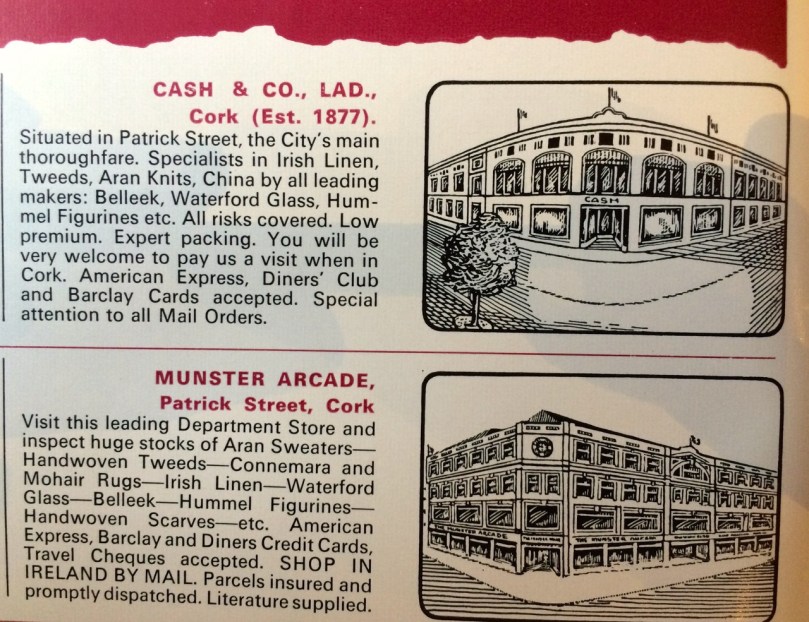
Each issue contained pages of small ads for shops and hotels and there is a poignancy to many which have since disappeared, such as the beloved Cork institutions of Cash’s and the Munster Arcade
Because this is part of a tourism campaign, selling Ireland as a happy destination, you won’t find a mention of The Troubles in Northern Ireland here, even though killing had become an almost daily occurrence there, bombing was commonplace and internment prisons were being set up. South of the border, we are told in these pages, all is calm and friendly and everywhere you go you will meet poets, wits and artists, ready to befriend you and pour you a pint.
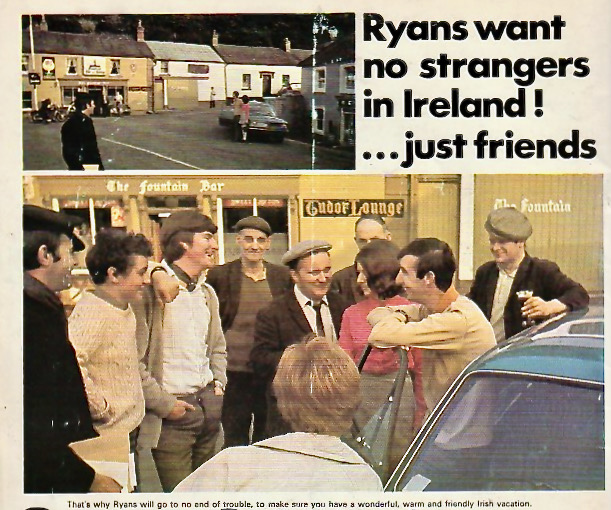
The couple in this ad had been able to fly to Ireland, hire the car for two weeks staying in hotels and guest houses, all for $298 per person. That’s the equivalent of $2,000 per person today, or $4,000 in total. – that €1600/3200. How does that compare?
But this was no ‘shamrocks and leprechauns’ representation of Ireland – it showed a country transitioning into the modern world, while fiercely clinging to what made us unique. Articles on heritage jostled with pieces on modern farming methods; biographies of bygone artists contrasted with a description of Rosc, the famous modern art show that everyone of my generation visited; wildlife photographs vied with pen-and-ink drawings of inviting pubs.

Two swanky hotels of my childhood – the International in Bray, long gone, and the La Touche in Greystones (currently being reborn as equally swanky apartments)
All the best people wrote for Ireland of the Welcomes: I think they must have paid well. Familiar names from the time crop up: the 1971 issues include writing by John Montague, Gerrit van Gelderen, The Knight of Glin, Maurice Gorham, Hilary Pyle, Bryan MacMahon, Mary Lavin, Terence de Vere White, Benedict Kiely, and Niall Sheridan (husband of Monica). Even the American writer, Richard Condon (The Manchurian Candidate), then living in a restored Georgian pile in KIlkenny (below), wrote a bon-viveur series on restaurants and hotels.

So let’s get started with the issue that was published exactly 50 years ago – January-February 1971. I turned 21 in 1971 and went from being an undergraduate to a graduate student at UCC. I was living between Cork and Dublin, with forays to Newgrange and Kerry. I spent the summer in Malahide, studying for my BA finals at the National Library and at Trinity College Library, ducking out for lunchtime concerts at St Anne’s in Dawson Street. In the autumn I set up in my very first independent flat in Cork with my friend Bessie and embarked on my Master’s in Archaeology, paying my way with what was then charmingly called a ‘Demonstratorship’ at UCC. The world was my oyster.
What the well-dressed Demonstrator was wearing in 1971
That whole sense of emerging into a modern world was true for Ireland as well in the 1970s. Anybody who lived in Dublin in the 70s will remember the Dandelion Market – it was the place to see and be seen on Saturday morning, full of hippies and trendies selling antiques, tat, artwork, crafts and lots of cool clothes. No tweed suits here – those fringed waistcoats were more my style! Take a look at RTE Archives footage from around then. Were you there? Recognise anyone?
Some of the photographs of the Dandelion Market that accompanied Maeve Binchy’s article
And guess who wrote about it in the January-February issue? Maeve Binchy! in 1971 Maeve was years away from a successful career as a novelist, but she was already a well-known columnist and editor of the women’s pages for the Irish Times. She and my mother, Lilian Roberts Finlay, shared a stage at the Vancouver Writers’ Festival in the 90s and I got to know her a little then, and as a friend of Mum’s. She was everything you imagine – warm, witty, wise and great company.
The wonderful Maeve Binchy (right), my mother, Lilian Roberts Finlay (left) and our great friend Ingrid, Vancouver, 1998
The Dandelion piece was followed by an article, Some Unexpected Ballad Writers, by Grainne Yeats. I wasn’t sure who Grainne Yeats was so I looked her up. She was WB’s daughter-in-law but that was not her claim to fame. An accomplished harpist and speaker of Irish, she was a music historian and virtuoso singer and player, performing all over the world, and an expert in the music of Turlough O’Carolan. She singlehandedly revived the playing of the kind of traditional wire-strung harp that O’Carolan would have played. Her obituary in the Irish Times spells out her many achievements, while a short YouTube clip gives you a flavour of the sound of the harp.
Her article is about a form of song that was not common in Ireland until the eighteenth century, but was then heartily embraced – the ballad. She tells of Oliver Goldsmith who, while a student at Trinity “lounged about the college gates, wrote ballads for five shillings, and crept out at night to hear them sung.” Yeats wrote ballads because he wanted his poetry to be ‘popular’ – in the sense of poetry that would belong to the people as a whole. She mentions James Joyce, Davis, Mangan, Terence MacSwiney, Arthur Griffiths. I append Yeats’s ballad, Come Gather Round Me, Parnellites, at the end of this post – read it in conjunction with this Irish Times post that lists Jack B Yeats’ illustration for this ballad as a selection for Modern Ireland in 100 Artworks.
One of several pages about the Shannon River, with detailed maps
A huge section in that same issue was devoted The Lordly Shannon. Shannon cruising was emerging as a holiday idyll and photographs showed cheerful boaters negotiating locks and fishermen hauling in salmon, interspersed with monastic ruins and enticing pub signs. It was a successful campaign – Shannon cruising is popular today and indeed by all accounts makes for a superb vacation.
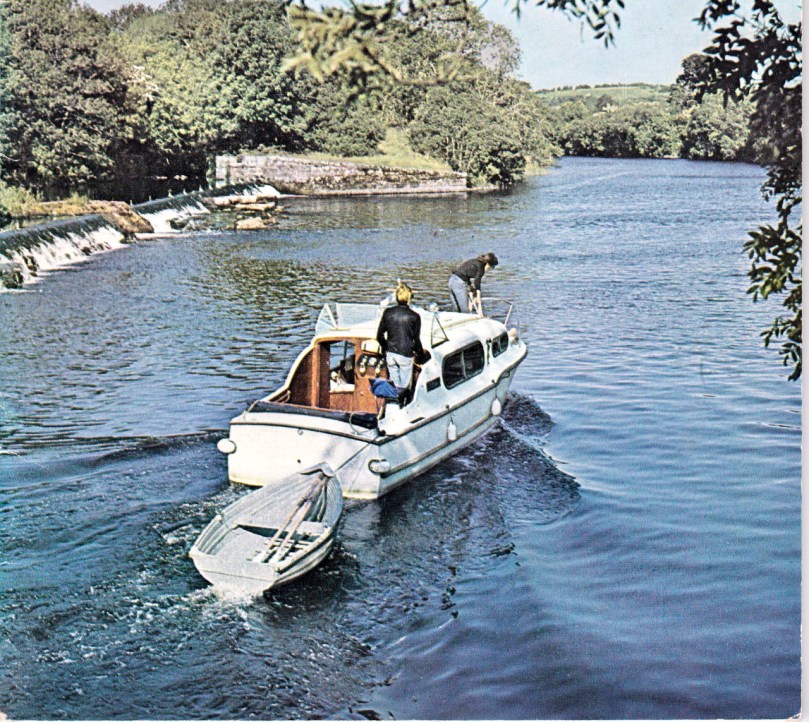
The final section for Jan-Feb was devoted to the Lawrence Collection of photographs. Anyone who has ever searched for or seen old Irish photographs will be familiar with the Lawrence Collection, now housed in the National Library. If you’re up for a good browse, take a look at their photostream on Flickr, but be warned, it’s addictive.
Robert French’s photograph of Adare in the 1880s or 1890s. The second photo was taken in 2015, just before fire destroyed some of the thatched cottages. Some or all have since been restored
Although I know about the Lawrence Collection, and had lost myself in it a few times, I wasn’t really aware that the ‘view’ photographs, 40,000 of them, had not been taken by William Lawrence himself. “The man to whom he entrusted the task of photographing Ireland was an employee named Robert French who worked anonymously for the Lawrence firm all his life.” The article, by Kieran Hickey, rescues French from that anonymity and points to the personality behind the camera, the chronicler of the social history of his time. “Despite the inflexibility of a heavy camera, a cumbersome tripod and individual glass negatives, the images are unerringly composed, never reframed in printing, and taken at the precise moment which shows the photographer’s eye to be selective, observant, patient and alert.”
1 Leinster Market, Dublin; 2 Galway City; 3 Dublin Quays; 4 and 5 Tourists in Connemara
Lawrence’s studios were destroyed in the 1916 Rising, with the loss of all the human subject photographs and negatives. But French’s enormous body of work had been stored elsewhere, which is why it is still available to us. In its sharing of this priceless collection, the National Library is meticulous in crediting Robert French as the photographer – a fitting tribute to one who laboured unrecognised for so long and contributed so much to our visual history.
My aim is to update this series every month or two with a 50 year retrospective. We’re off to a good start!

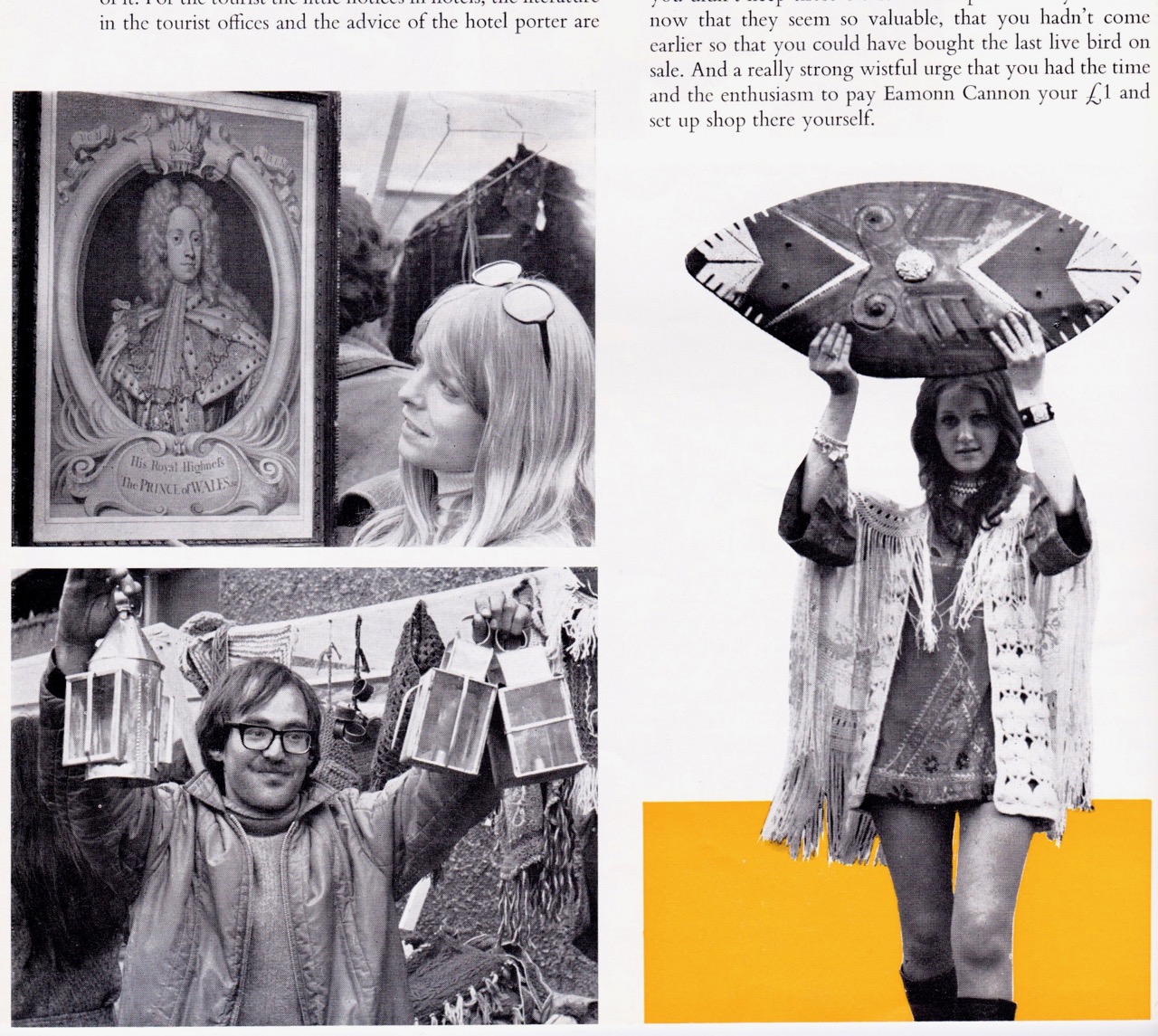
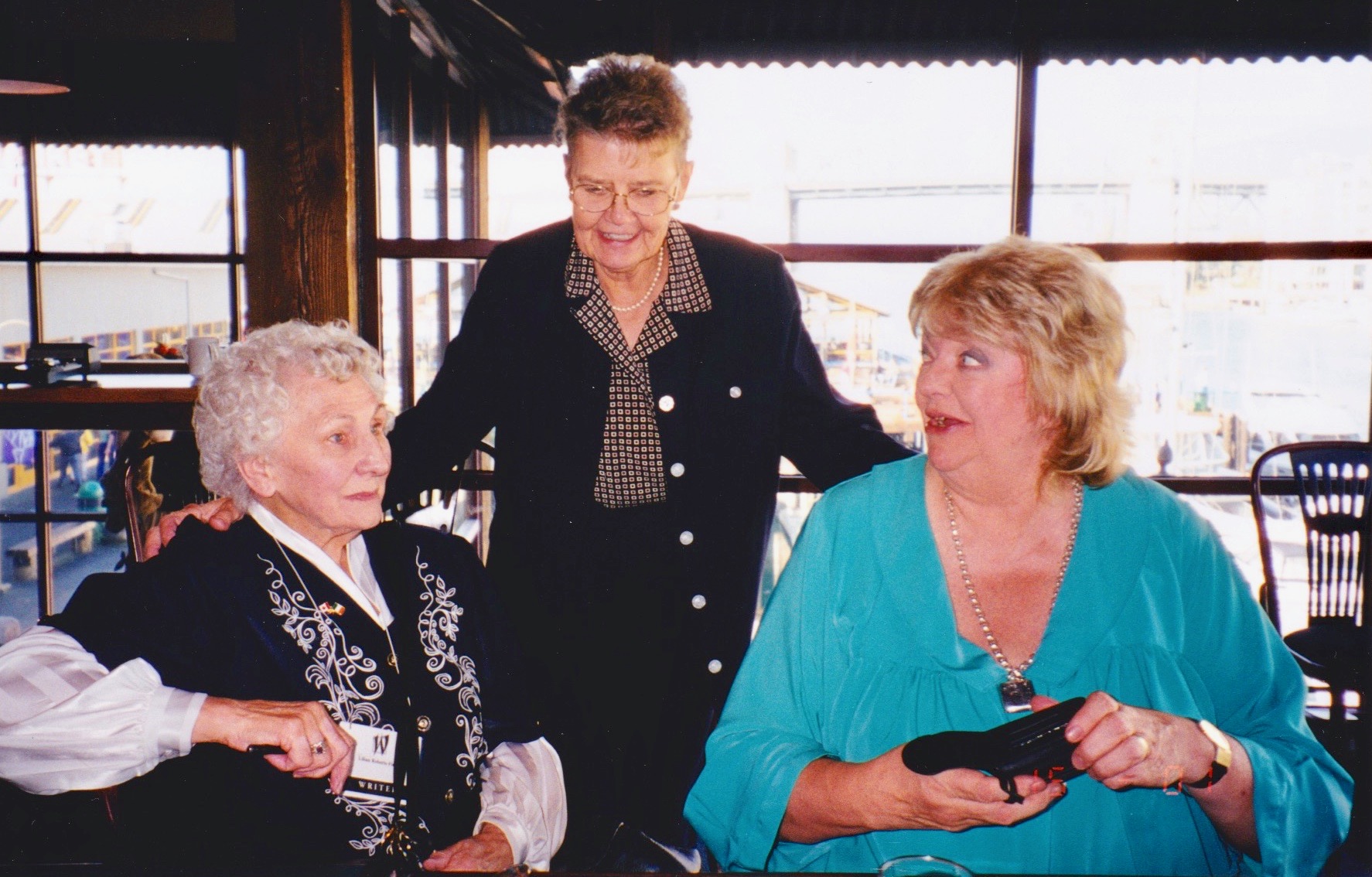

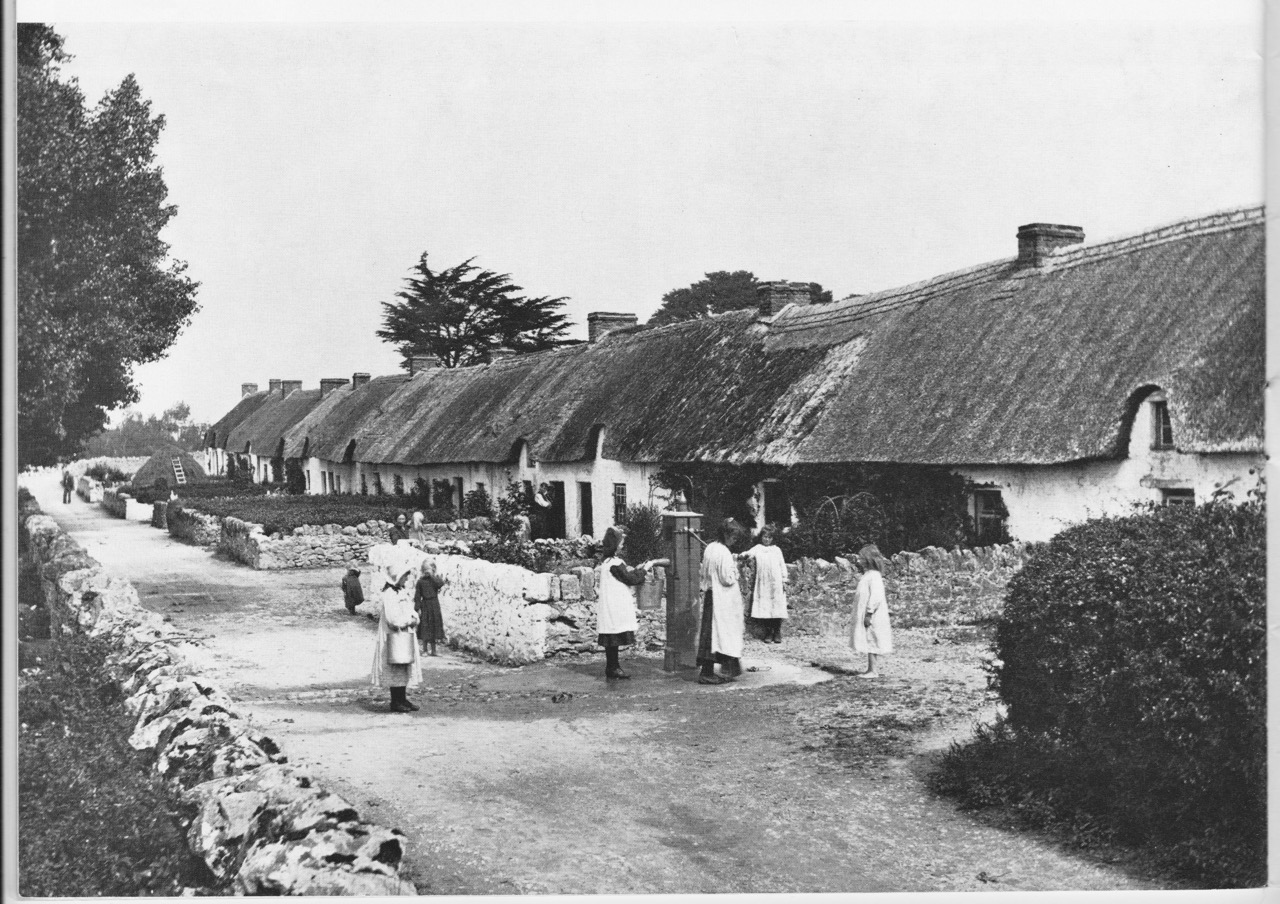


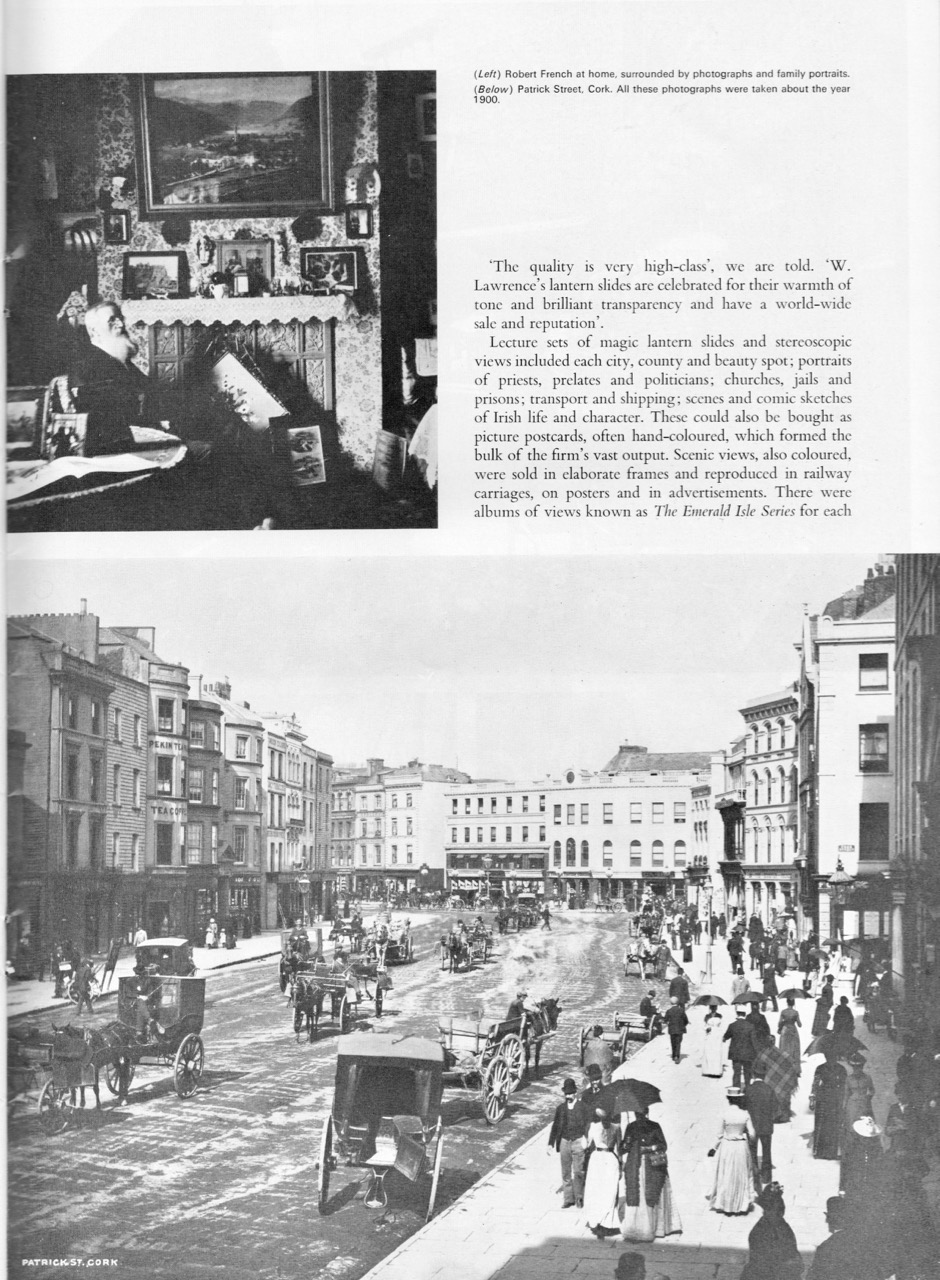
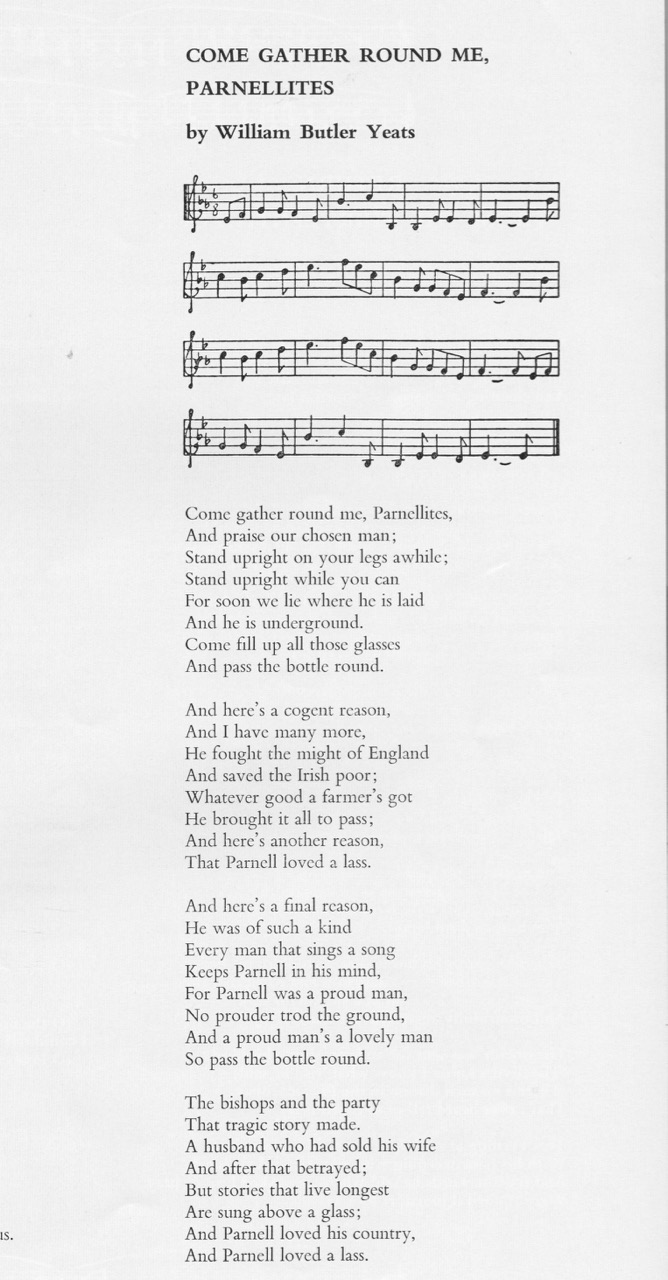
Are you aware of Maeve Binchey’s affection for Schull? She would stay at Nancy Brosnan’s Stanley House.
LikeLike
Didn’t know that! Thank you
LikeLike
That is brilliant Finola. The Dandelion Market (shame about the music though), that great picture of St Patrick’s Street, The WB Yeats rabble rouser. Great that you’re sharing that treasure trove with us.
LikeLike
Glad you liked it, Roy – lots more to come!
LikeLike
Really enjoyed this and remembering 1971 …and LOVED the old photo of you!
LikeLike
Thanks, Jane – there was no photo of me in that piece but you’re the second person who thought there was! When are you booking your ticket to come here!!
LikeLike
I love reading the posts that you and Robert write and hope to visit Ireland when it’s safe to travel again. In the meantime, I look forward to our zoom meeting tomorrow.
LikeLike
Thanks, Sandy!
LikeLike
Fantastic! I will share with another Irish friend. (Stephanie)
LikeLike
Glad you enjoyed it Stephanie. Hope to highlight lots more in the next few months.
LikeLike
Brilliant- Id say you were a wild lady in 1971.!!!
LikeLike
Alas, all too conventional, Brendan. As befits a nice convent-education young lady.
LikeLike
Just to know- Through the County Libraries in Ireland, any member can access various Irish and international newspapers and magazines online via Press Reader-including Ireland of the Welcomes, recent editions. All you need is your library number. You can join the Library (free) online too. Very handy!
LikeLike
Great to know, Patricia. I actually have a library number, so I am off to explore!
LikeLike
Love this. Wow.
LikeLiked by 1 person
No, it can’t really be 50 years ago!! What a treasure trove of information and nostalgia these magazines must be, loved the dip into the past.Good to see your mum, she looked very glamorous.
LikeLike
You’re right – it CAN’T be! The photo of Mum and Maeve in Vancouver brought back so many wonderful memories.
LikeLike
I could browse old magazines for ever ! I look forward to your monthly samples.
Perran
LikeLike
Thanks, Perron – they certainly are seductive.
LikeLike
Great idea Finola I look forward to your posts. I know I should only speak for myself but feel safe in saying we are beyond embarrassment by history at this stage
Donal Mangan
LikeLike
I dunno, Donal – what about those haircuts?
LikeLike
Fascinating! The RTE footage brought some memories but in my case of strolling down the Portobello Road market in London and the Peter Sellers version of ‘Any Old Iron`.
LikeLike
Portobello Road was such fun – I was there once.
LikeLike